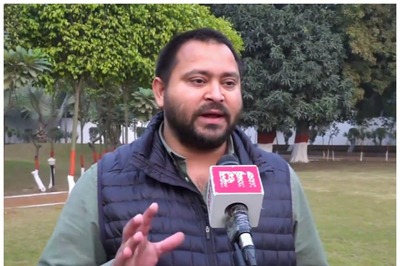
views
In 1990, Lalu Yadav, sub altern extraordinaire, became the chief minister of Bihar. For the first four months of his reign, he chose to stay in what the ‘bada sahibs’ called ‘chaprasi’ quarters. In those early days, Lalu was conferred the title ‘Lok Nayak’ by his marginalised backward caste followers. For them, Lalu was an apostle of the original messiah of social justice — Jaiprakash Narayan (JP). If JP’s call to ‘total revolution’ nearly derailed Indira Gandhi’s brand of plebiscitary Congress-ism, then Lalu was totalising caste politics to bring down the edifice of ‘savarna’ hegemony.
In this endeavour, Lalu wasn’t alone. His contemporaries Sharad Yadav, Nitish Kumar, Mulayam Singh Yadav, Kashi Ram and his protege Mayawati, the templars of Dravidian politics and the commissars of Bengal and Kerala, all were of the belief that ‘Savarna’ hegemony was essentially a metaphor for authoritarian populism, exalted by Indira but fast ceding ground to Hindutva. It had to be stopped.
The ideological spark lit by Lalu and his fellow satraps, particularly in the North, was to redefine Indian politics. Few would have guessed then that an innocuous colloquialism ‘Mandal Vs Kamandal’ would unleash a wave of political and social change, the ripples of which are felt to this day.
In those heady days of social justice politics, regional chieftains like Lalu held disproportionate sway over Indian politics. They seemed to even be immune to the pressures of anti-incumbency. Lalu, when questioned on his mis-governance, once remarked, “I may not have delivered development, but I certainly gave them a voice.”
From 1990 till 2014, it would be fair to say that governments at the Centre ruled at the pleasure of the satrap. Many regional potentates often consigned mandates to the dustbin of history. The malodour of ‘horse trading’ that at times accompanied such whimsical betrayals was often dressed up by commentators as the frankincense of federalism.
Since 2014, when Modi was elected on the back of a massive mandate that liberated his government from coalition compulsions, the relationship between the satrap and the Centre has undergone a sea change. This has less to do with the satrap and more to do with the BJP. To be precise, the BJP under Modi.
Modi’s years in office are marked by — to borrow a football term — ‘total’ politics. Modi has developed a remarkable model that allows him to ‘saturate’ with state benefits to those at the bottom of the pyramid. These are the very same castes and classes that had abandoned the Congress in the late 80s to coalesce around more salt-of-the-Earth leaders of their own ‘baradari’. Modi’s BJP strives and has largely succeeded, to become the ‘big tent party’ cutting the ground from under the feet of regional entities.
This isn’t to say that regional satraps are out of the game. In 2020, their opposition to the CAA and farm laws did check the NDA. But as time has elapsed, it is becoming clear that those were Pyrrhic victories.
Today, supremos of yore are struggling to define themselves against the BJP. Most of them seemed to have concluded that if they can’t defeat Modi, then perhaps it is best to join him.
And so, in the run-up to the 2024 Lok Sabha elections, the NDA is seeing additions to its ranks. Nitish Kumar, Chandrababu Naidu, Ajit Pawar, the Gowdas, Jayant Chowdhury, and Pradyot Debbarma have joined the NDA. Even those that haven’t (Naveen Patnaik and Jagan Reddy) are in talks or only too happy to align with the NDA whenever the BJP seeks them out.
Undoubtedly, the 2024 Lok Sabha polls will be remembered (if opinion polls hold) for the return of an incumbent PM for the third consecutive term — a record held only by Nehru. But the more consequential story for Indian politics could be the subsidence of the satrap. What this humbling will ultimately mean for the future of federalism, only time will tell.
Views expressed in the above piece are personal and solely those of the author. They do not necessarily reflect News18’s views.




















Comments
0 comment